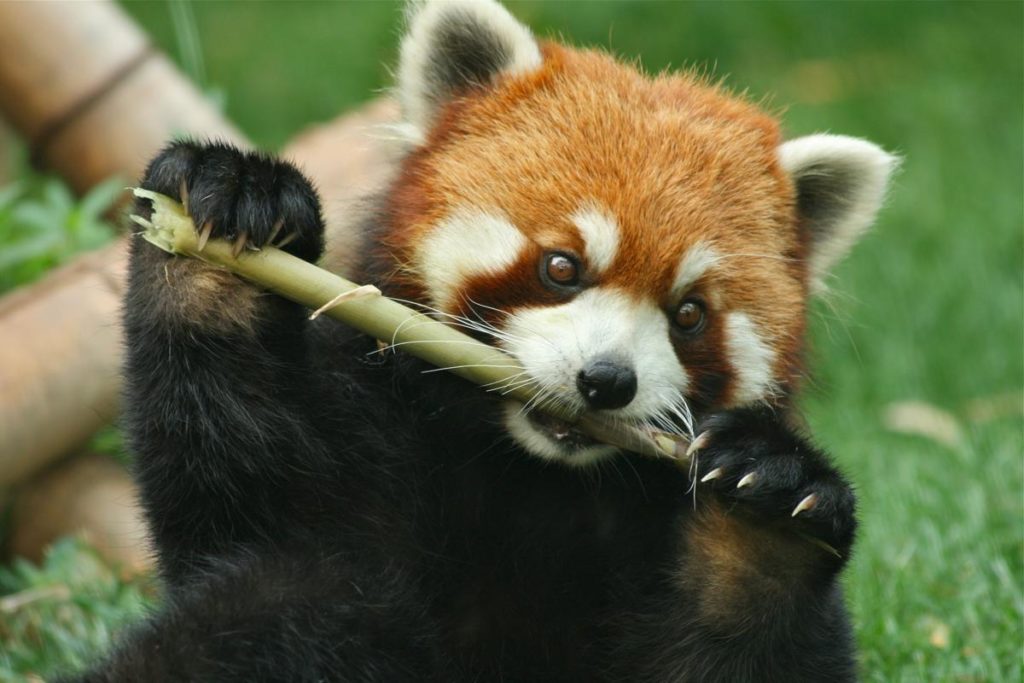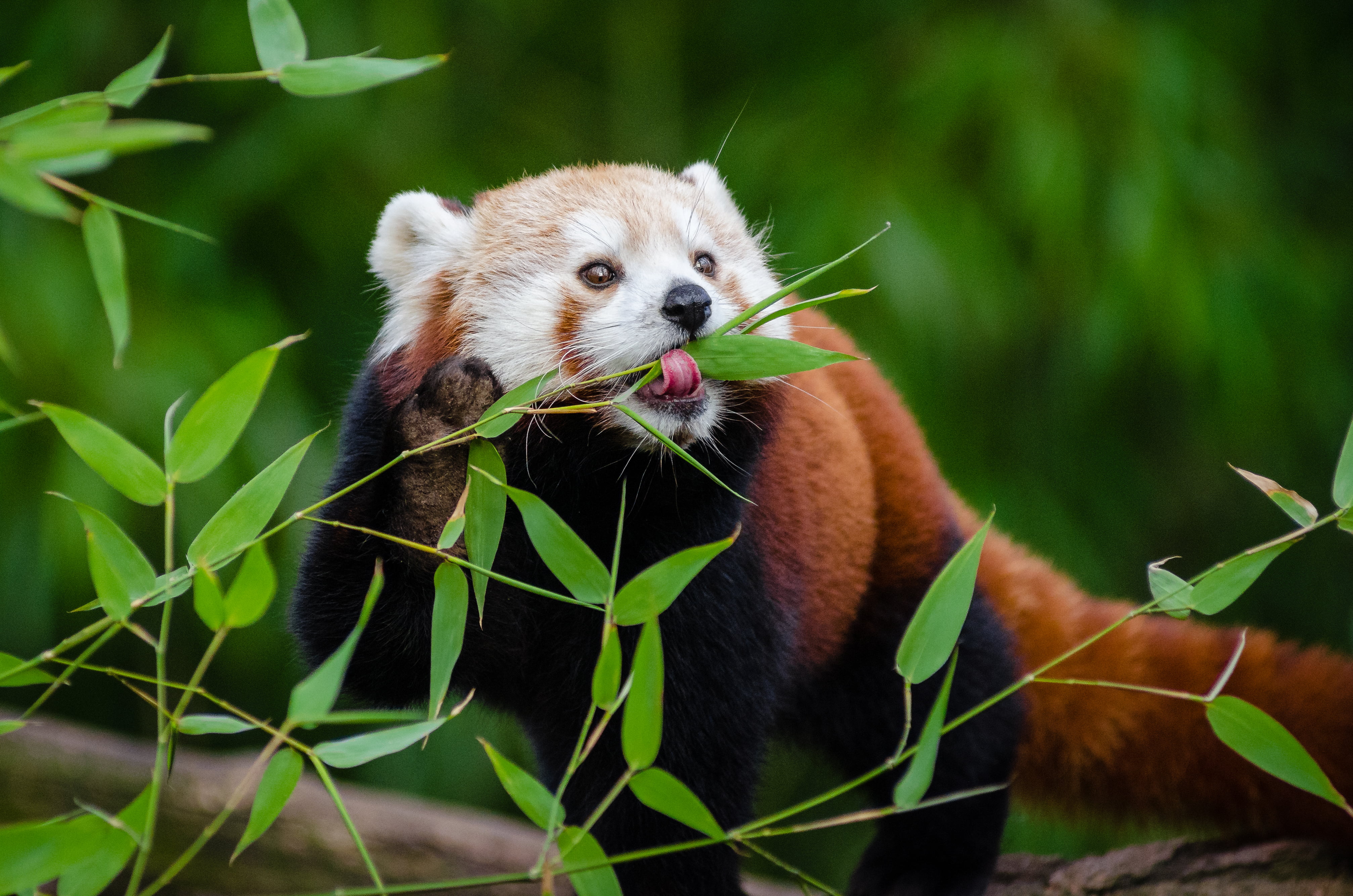

The red panda is largely herbivorous and feeds primarily on bamboo, mainly the genera Phyllostachys, Sinarundinaria, Thamnocalamus and Chimonobambusa. It also feeds on fruits, blossoms, acorns, eggs, birds and small mammals. Bamboo leaves may be the most abundant food item year-round and the only food they can access during winter.[61] In Wolong National Nature Reserve, leaves of the bamboo species Bashania fangiana were found in nearly 94 per cent of analysed droppings, and its shoots were found in 59 per cent of the droppings found in June.

The diet of red pandas monitored at three sites in Singalila National Park for two years consisted of 40–83 per cent Yushania maling and 51–91.2 per cent Thamnocalamus spathiflorus bamboos[a] supplemented by bamboo shoots, Actinidia strigosa fruits and seasonal berries.[64] In this national park, red panda droppings also contained remains of silky rose and bramble fruit species in the summer season, Actinidia callosa in the post-monsoon season, and Merrilliopanax alpinus, the whitebeam species Sorbus cuspidata and tree rhododendron in both seasons. Droppings were found with 23 plant species including the stone oak species Lithocarpus pachyphyllus, Campbell's magnolia, the chinquapin species Castanopsis tribuloides, Himalayan birch, Litsea sericea and the holly species Ilex fragilis. In Nepal's Rara National Park, Thamnocalamus was found in all the droppings sampled, both before and after the monsoon.[66] Its summer diet in Dhorpatan Hunting Reserve also includes some lichens and barberries.[42] In Bhutan's Jigme Dorji National Park, red panda faeces found in the fruiting season contained seeds of Himalayan ivy.

Red panda holding onto a plant and eating
Red panda feeding
The red panda grabs food with one of its front paws and usually eats sitting down or standing. When foraging for bamboo, it grabs the plant by the stem and pulls it down towards its jaws. It bites the leaves with the side of the cheek teeth and then shears, chews and swallows. Smaller food like blossoms, berries and small leaves are eaten differently, being clipped by the incisors.[29] Having the gastrointestinal tract of a carnivore, the red panda cannot properly digest bamboo, which passes through its gut in two to four hours. Hence, it must consume large amounts of the most nutritious plant matter. It eats over 1.5 kg (3 lb 5 oz) of fresh leaves or 4 kg (9 lb) of fresh shoots in a day with crude proteins and fats being the most easily digested. Digestion is highest in summer and fall but lowest in winter, and is easier for shoots than leaves.[67] The red panda's metabolic rate is comparable to other mammals of its size, despite its poor diet.[68] The red panda digests almost a third of dry matter, which is more efficient than the giant panda digesting 17 per cent.[67] Microbes in the gut may aid in its processing of bamboo; the microbiota community in the red panda is less diverse than in other mammals.